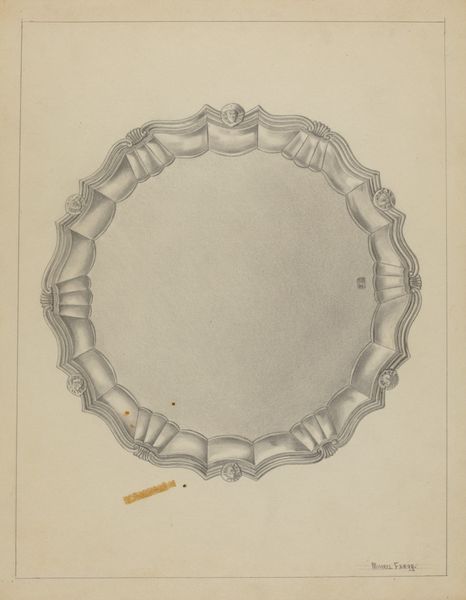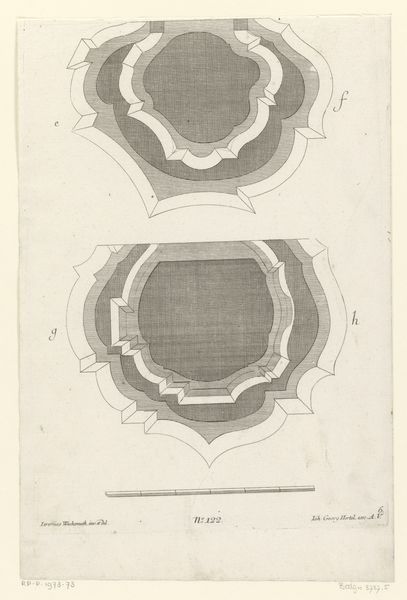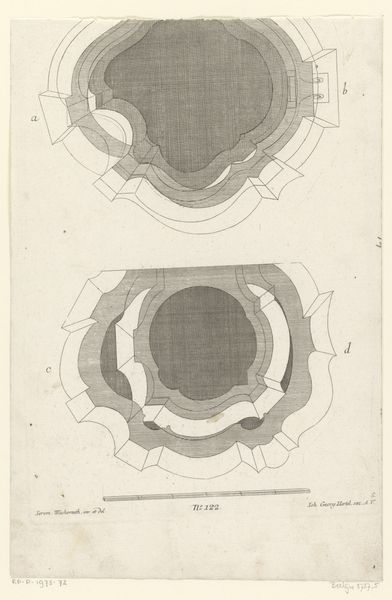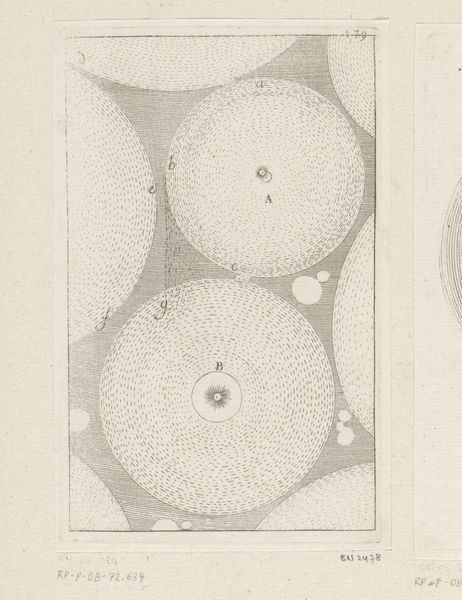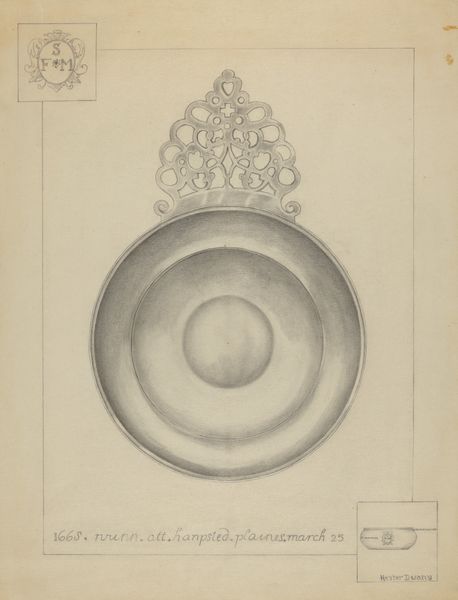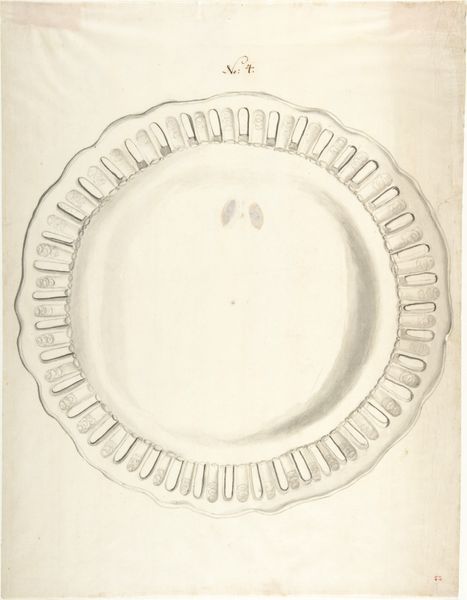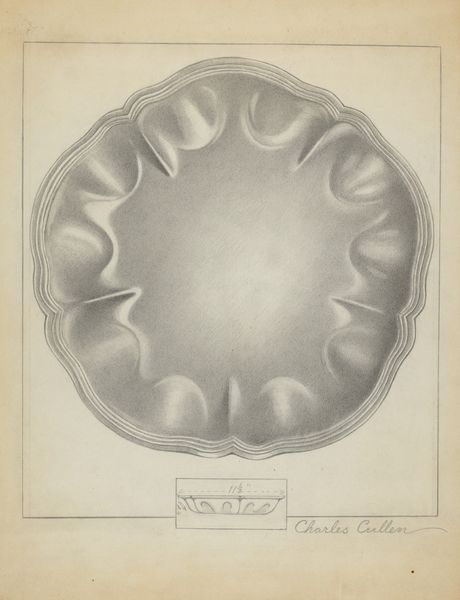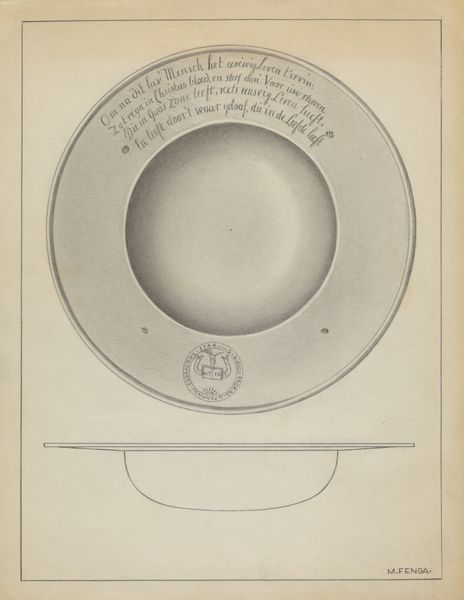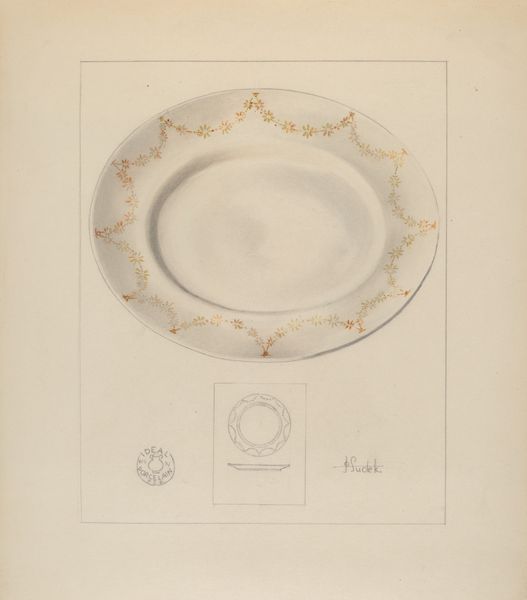
drawing, pencil
#
drawing
#
geometric
#
pencil
#
modernism
Dimensions: overall: 29 x 22.8 cm (11 7/16 x 9 in.) Original IAD Object: 1 1/2" high; 10 3/4" in diameter
Copyright: National Gallery of Art: CC0 1.0
Curator: Up next, we have a design drawing entitled "Silver Salver," dating from around 1936. It appears to be the work of Milton Grubstein and is rendered in pencil. Editor: It’s subdued, almost ghostly. The details are meticulous, particularly the scalloped edge and those tiny, almost hidden technical drawings in the lower corners. The rendering itself feels very… functional. Curator: Exactly. Grubstein's work, particularly designs like this one, demonstrates the intersection of modernism with commercial art. Salvers, of course, were associated with a certain level of social standing, a tool for display in wealthier homes. Editor: Right, so the design itself represents a specific type of labor – design work, skilled craftsmanship – intended for a privileged consumer. I'm struck by how the materiality is absent, it’s just a representation of something meant to be touched and used. The design details feel crucial here – considering the physical making and form factor that matters as much to the owner and to the person crafting. Curator: And note the geometric quality; very characteristic of the period, pointing towards functional elegance over ornamentation. These design elements, replicated industrially, could disseminate an idea of ‘modern’ taste, altering the visual culture even at a domestic level. Editor: Absolutely. Looking at it now, I keep considering the act of translating it into a physical object – all that detailed process that it took in fabrication with certain types of tool. Curator: It gives you a tangible connection to production practices of the era. Think about how art and design academies trained craftspeople. Editor: The clean lines, repetitive curves—all designed for relatively easy industrial production too. It makes me question how accessible "modernism" truly was if the labour and products primarily catered to the affluent. Curator: That's the crux of it: this drawing exists both as an object of modernist artistic sensibility, and as an element embedded within larger socio-economic power structures. Editor: It reframes my whole understanding of domestic objects of that era and makes me reflect on how drawings affect the trajectory of material culture.
Comments
No comments
Be the first to comment and join the conversation on the ultimate creative platform.

